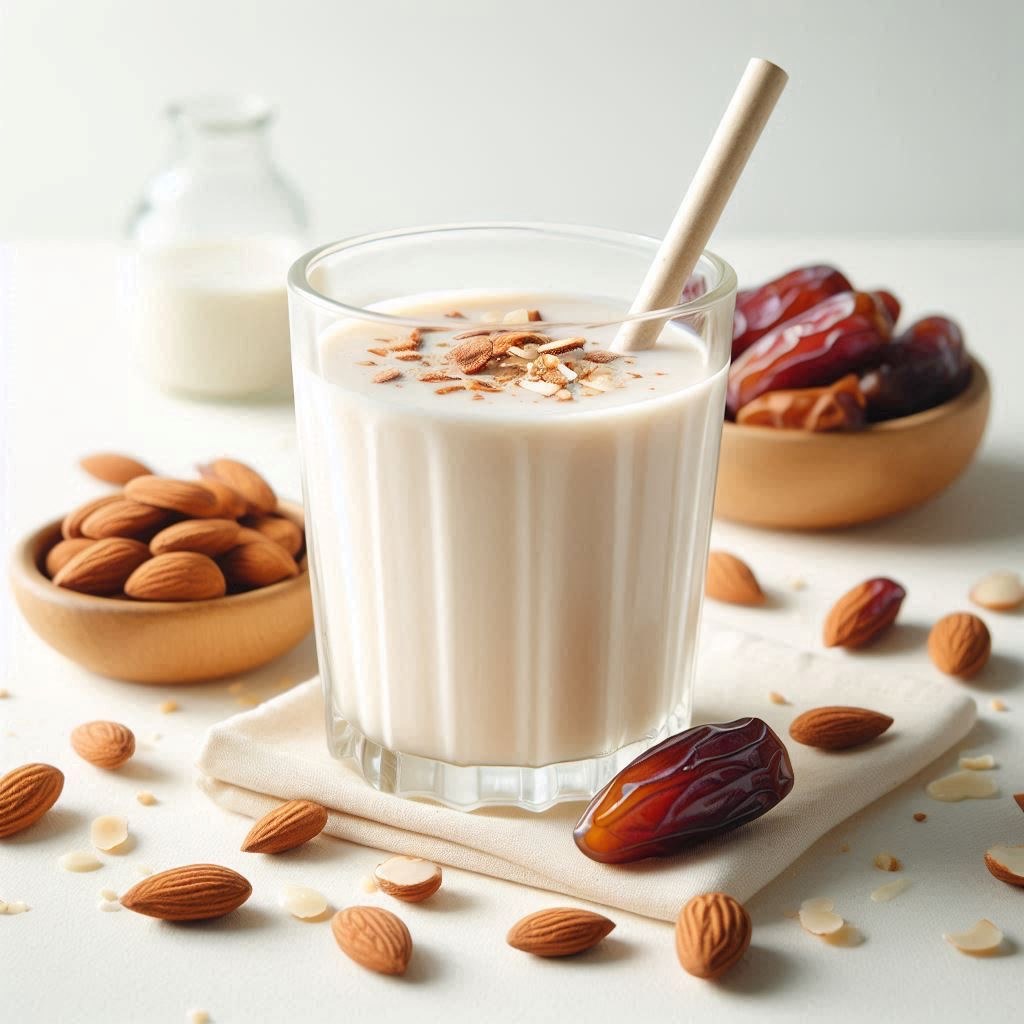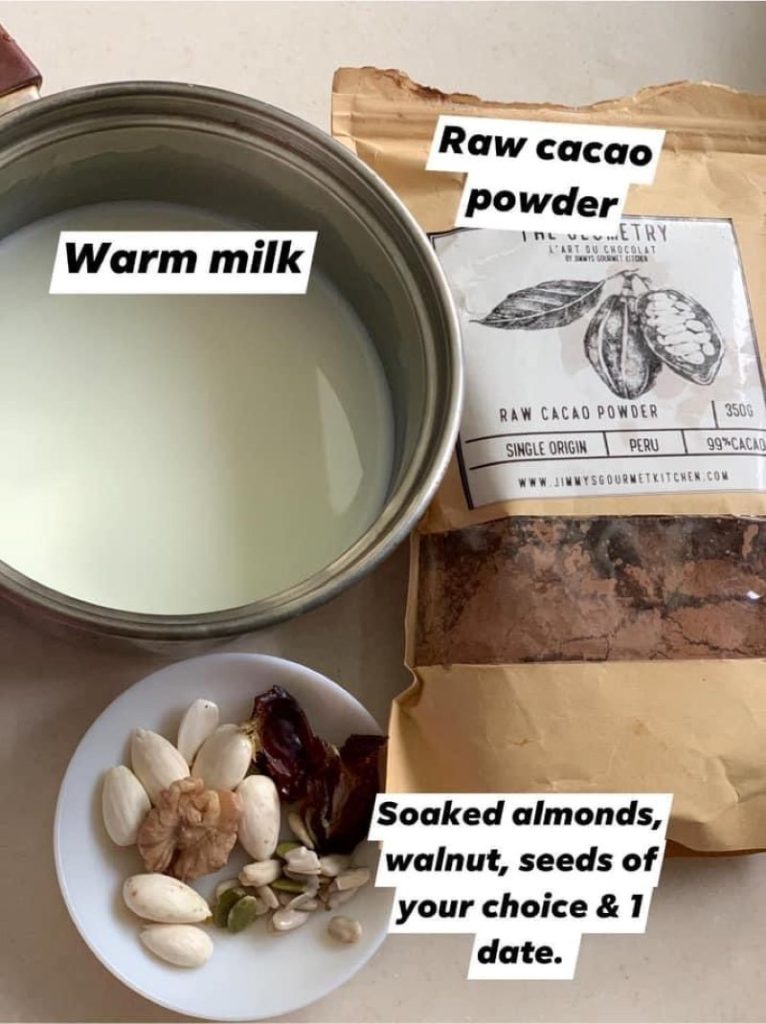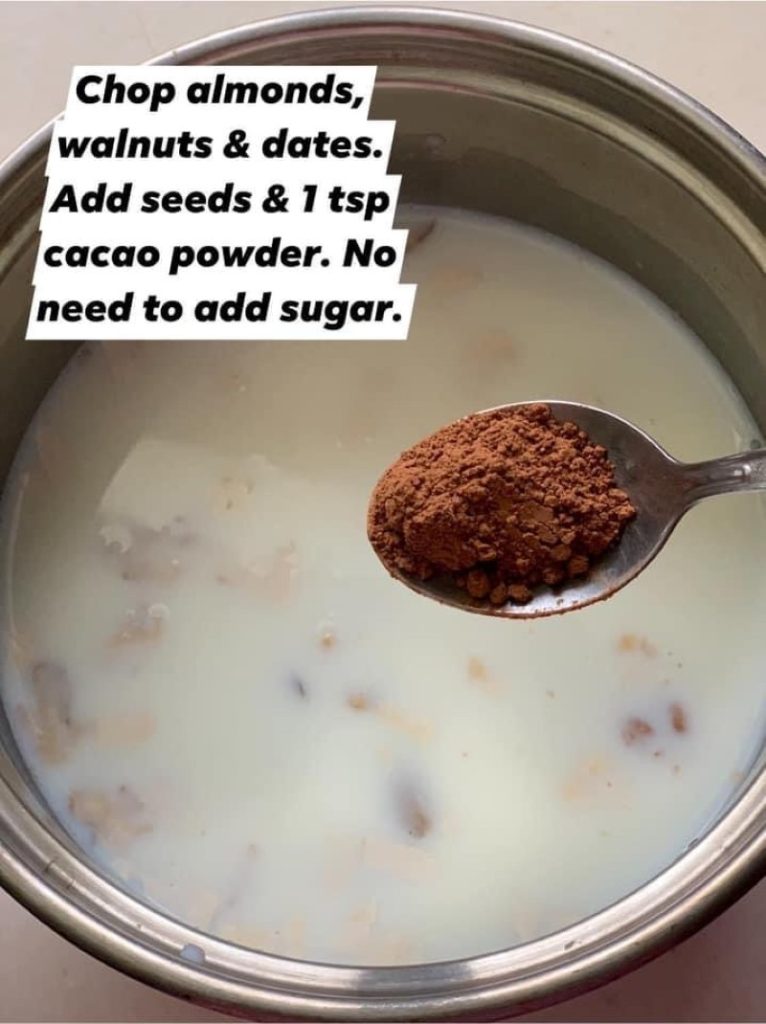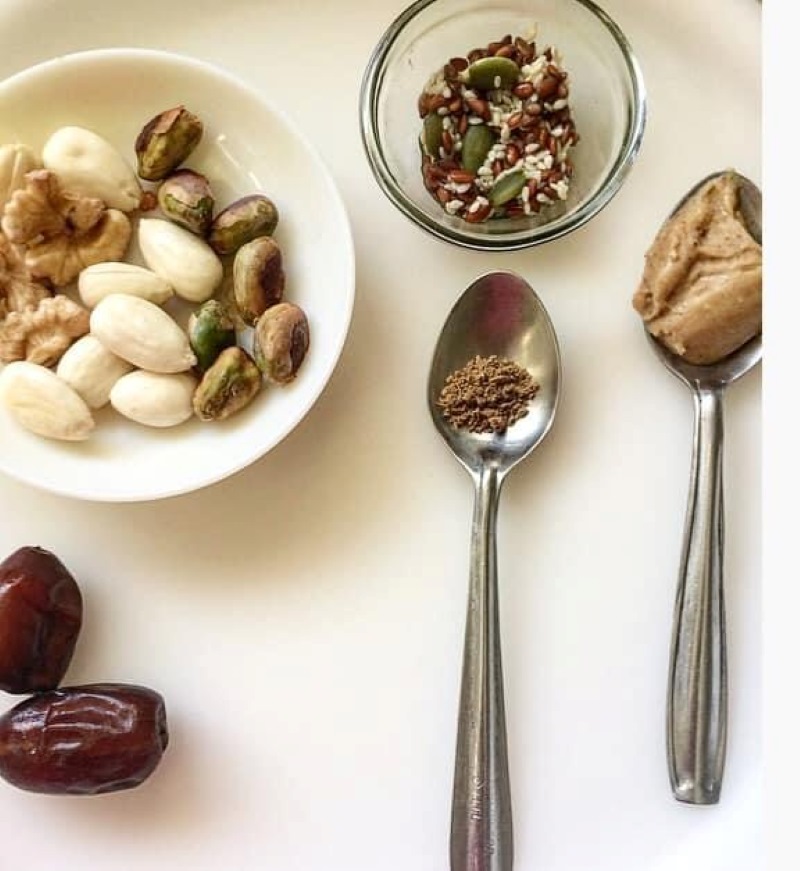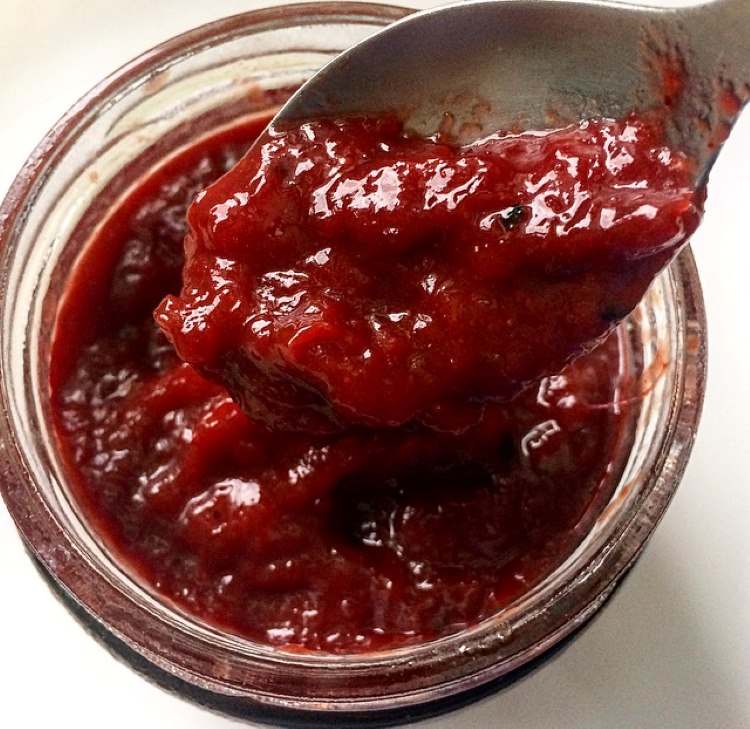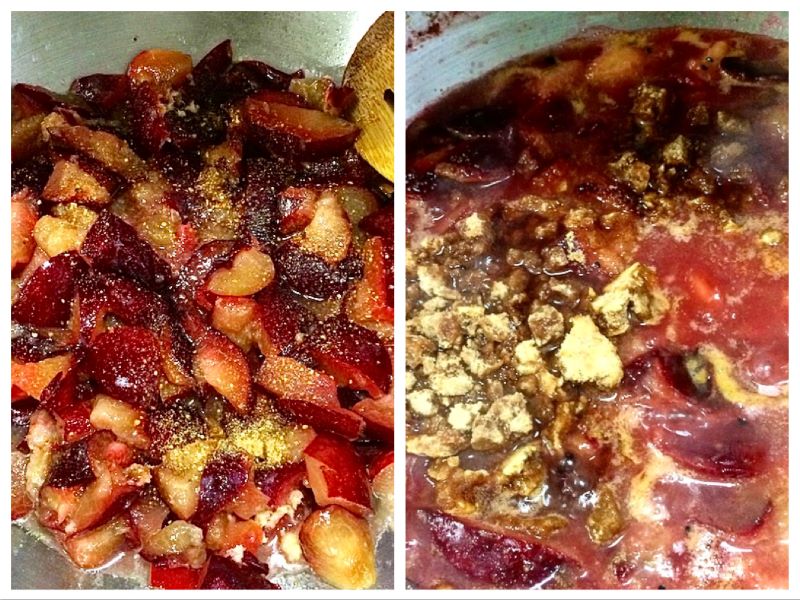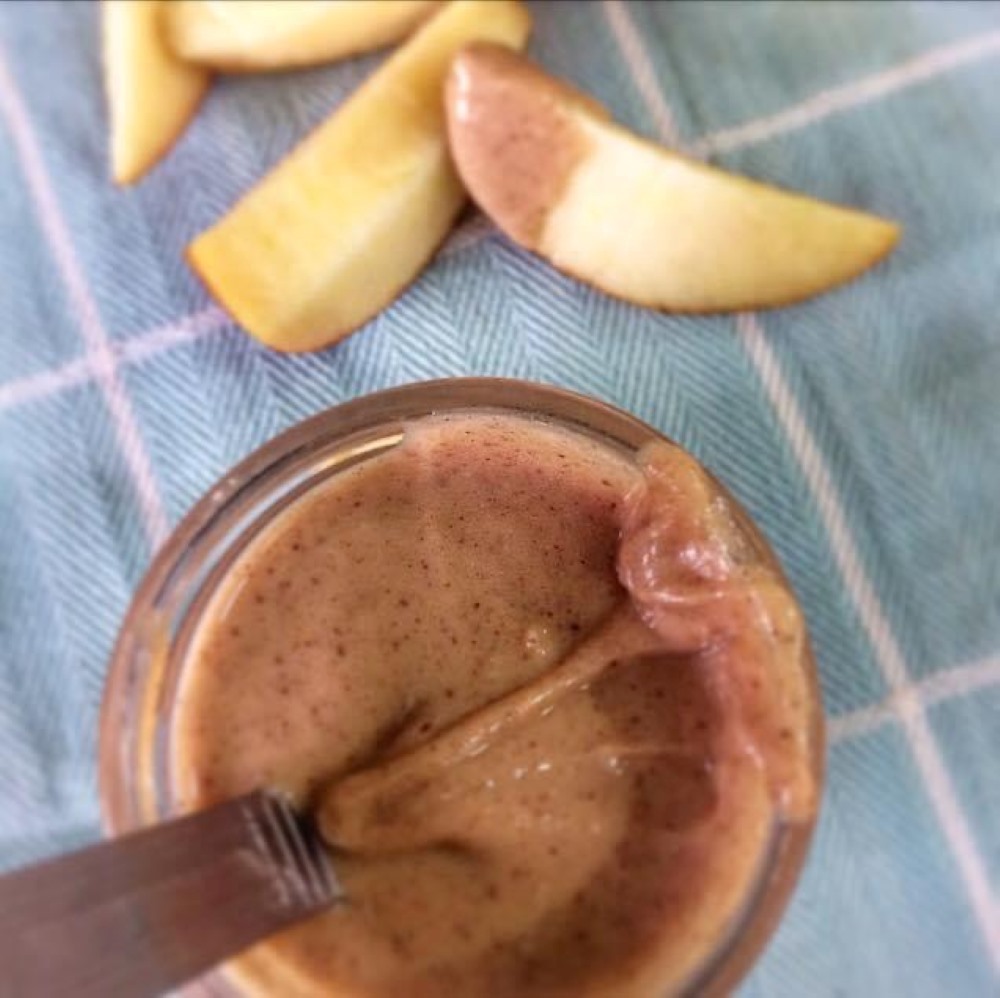
I can’t stop making this peanut butter at home. If you have a high power blender, then this peanut butter can get ready in just a few minutes.
I’ll show you how to make creamy or crunchy peanut butter, plus a variation which I love. The most time-consuming part of this easy recipe is roasting the peanuts, which takes about 10 minutes. Roasting helps peanuts to release oil and it brings out excellent flavor of peanuts.
Peanut butter is one of the healthiest sources of proteins. It has the right amount of amino acids for protein digestion. Just one tablespoon will give you 4 grams of good quality protein. One tbsp of it also contains about 8 grams of healthy fat. It is great for natural weight gain in adults and kids. In addition to protein, peanut butter is also packed with vitamins and minerals like vitamin B6, vitamin E, zinc and magnesium. If you are a fitness enthusiast then eating peanut butter daily can keep your body functioning at its best and provide you that necessary boost of vitamins and minerals.

But how healthy the peanut butter you have been buying from the market is?
Pick up the label and check the ingredients. Most peanut butter ingredients would be roasted peanuts, sugar, hydrogenated vegetable oil which includes cheap quality processed cotton oil, palm oil and soybean oil and salt. So along with all that healthy peanuts, you are also having processed sugar and inflammatory bad oils. This is definitely not what you want to put in your system.
For making peanut butter at home the only equipment you will need is a blender. I have used a high power blender but a food processor is fine too.
Ways to use Peanut Butter
- The easiest and the most delicious way to use it is, peanut butter toast with maybe bananas or strawberries on top.
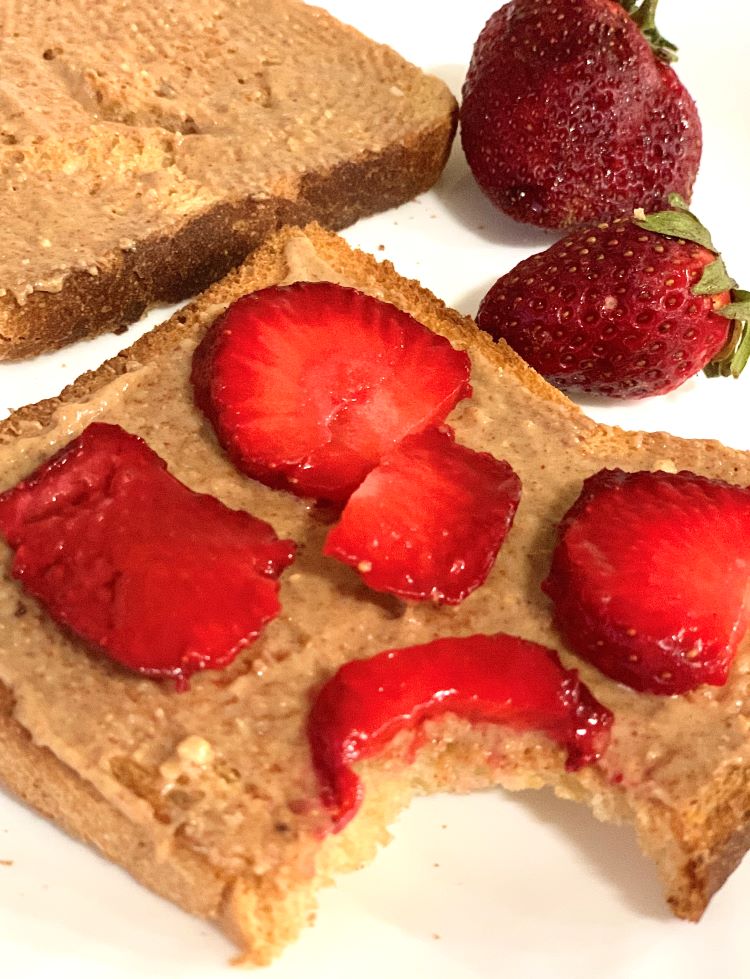
- You can make peanut butter cookies, muffins, add it to granola, smoothies, overnight oats or have it with fruits like apples.
- You can make energy balls with peanut butter for healthy snacking.
- You can also make Peanut Butter Dressing for salads. Check out this amazing Thai Peanut Butter Dressing recipe.
Recipe: makes 10 ounces
Ingredients
- 2 cups Raw Peanuts (with or without skin)
For Variation
- 1/4th tsp Pink Salt/Rock salt/Sea salt
- 1 tbsp Raw Honey or Maple Syrup
- 1 tbsp unprocessed Coconut/Olive oil/Groundnut Oil
Instructions
- Spread raw peanuts on a baking tray and dry roast in a preheated oven at 180 C for ten minutes or till peanuts release slight oil. After 4 to 5 minutes, give a shake then roast again for another 4 to 5 minutes.
- You can also dry roast the peanuts on stove top as well till they are fragrant. Just make sure not to burn them. Keep stirring.
- Remove the skin. I retained skin of some. The skin of peanuts contains antioxidants.
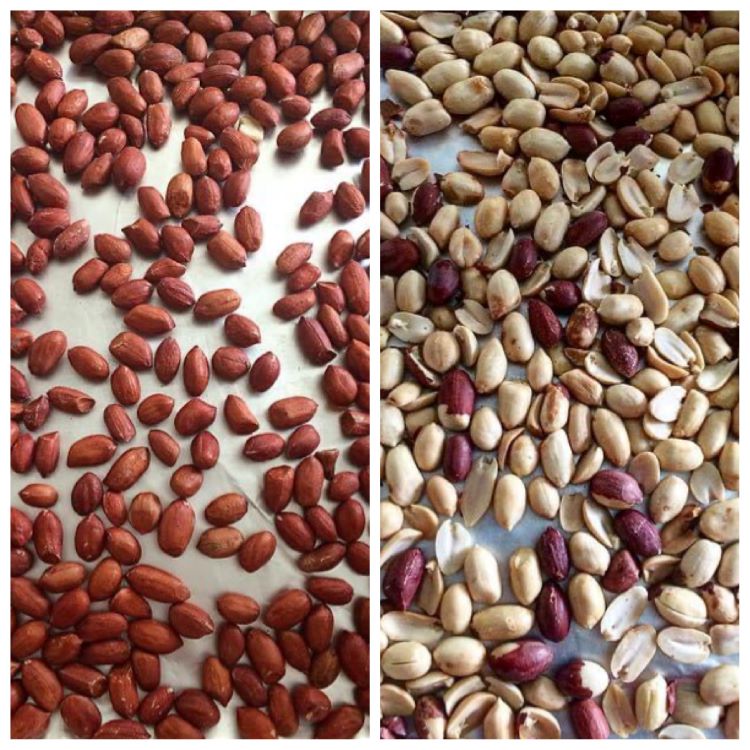
- Put the peanuts in a blender and blitz till peanuts crumble. Now if you like Chunky Peanut Butter, save few tbsps of crumbled peanuts and mix towards the end when the peanut butter is ready.
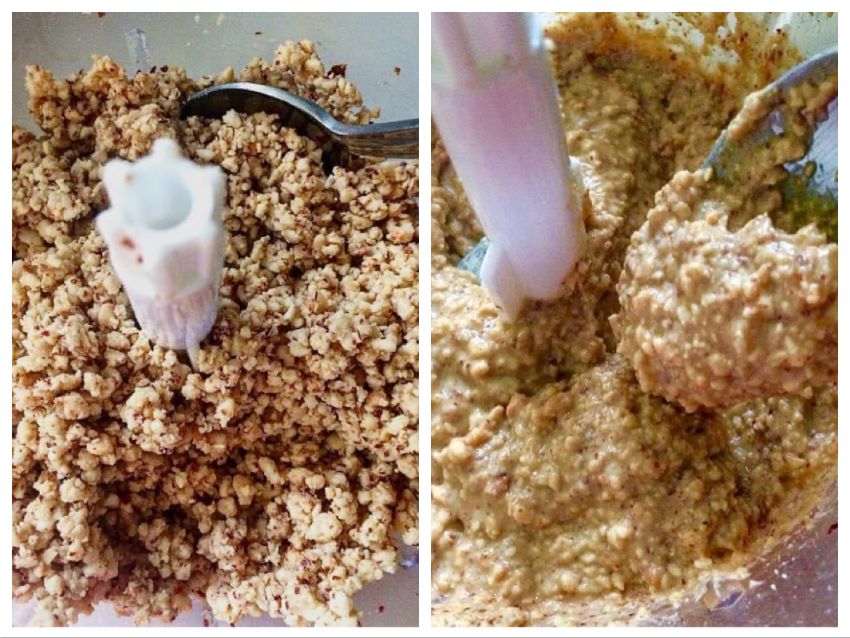
- Blitz for another minute. It’ll start coming together. Open and scrape from the sides now. Keep repeating this process till you see butter forming. Keep blitzing at this point if you want Creamy Peanut Butter till butter gets a flowing consistency.
- But if you want a variation then, once the butter starts forming, add salt, honey or maple syrup and oil. Now blend again till you get a smooth creamy peanut butter which will be slightly sweet and salty.

- The whole process will roughly take you 5 minutes if using a high processor blender. If not then this should take you around 10 minutes.
Storing
Transfer the peanut butter to a food-safe container or jar, cover it, and store it in the refrigerator for up to 1 or may be even 2 months if stored well. In winters, you can keep the peanut butter at a room temperature. If the peanut butter separates, use a spoon to stir it until it is well blended.
Caution: Peanut Butter is not recommended for kids below 1 year.
Stay Healthy! :)) Do let me know in the comments if you tried this recipe and if you want healthy recipes using peanut butter.











